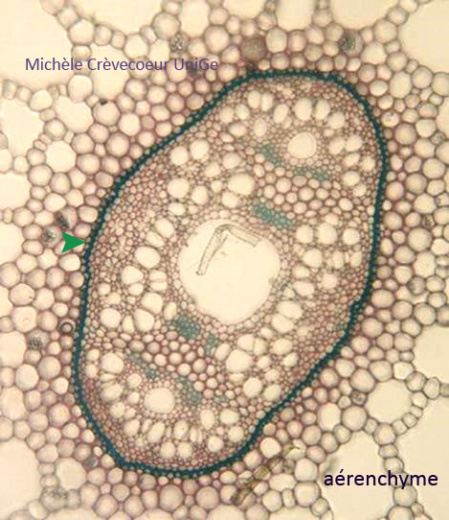Cross section through a stem of Potamogeton.
Potamogeton (pondweed) is a perennial aquatic plant of family Potamogetonceae, known by the common names ribbon leaf. It belongs to the category of hydrophytes with two types of leaves, partly submersed and floating. The leaves are thin with a large flat surface, a morphological adaptations to the aquatic medium in which the plant lives. It is a monocotyledon. Potamogeton is frequently used in green spaces and gardens to decorate water places in which they protect the aquatic fauna. Unfortunately, it can become invasive.
Part of a cross section.
The epidermis (red arrow) consists in a monolayer of small cells with a thick outer cell walls and a thin to inexistent cuticle. Extensive lacunae occur in the cortex which consists in small cells arranged in rows around the lacunae (blue arrow). This parenchyma is called aerenchyma. Small bundles of cells with lignified wall, sclerenchyma (green arrow), stabilize the strands of intersecting aerenchyma. The vascular tissue is confined to a central cylinder demarcated by an endodermis, the most inner layer of the cortex.

Aspect of the central part of the section at high magnification. This is probably a trio stele type. Phloem is abundant and true xylem tissues are missing. They are replaced by xylem lacunae. The stele is delimited by an endodermis with U cells (green arrow).

Particular characteristics of this section: well developed aerenchyma typical of hydrophytes and endodermis with U cells.